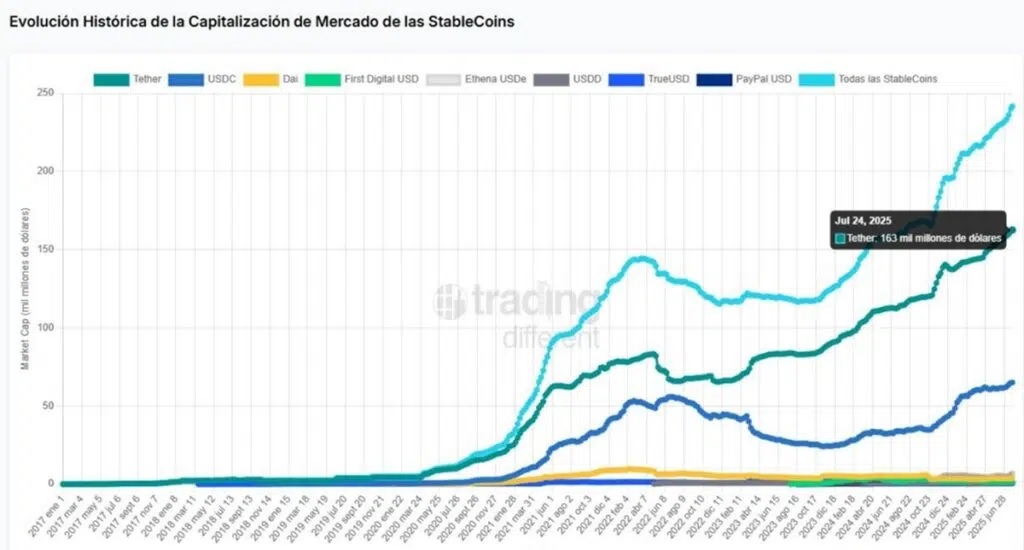The growing projection of Donald Trump in the US policy has lit alerts in Asian financial centers, which now accelerate their plans to regulate and adopt Stablecoins. A reaction that evidences both geopolitical tension and interest in strengthening monetary stability in an uncertain global environment.
Several countries in the region- among them Hong Kong, Singapore, Japan and South Korea- are accelerating the design and implementation of regulatory frameworks for the stablecoins and They point to the increase in these currencies linked to Asian currencies, Even when the authorities have expressed their concerns about capital exits, he assured it Bloomberg.
All concern has its origin in the Genius Law, a measure that experts will promote the broader use of digital tokens that it intends to maintain a dominance of the dollar worldwide. If the tokenized dollar gains ground through private emitters under the umbrella of the genius law, recently approved in the US, Asian economies could face pressures on their financial systems and local currencies.


Increase continental interest
In Hong Kong, the Monetary Authority (HKMA) launched on August 1 a specific regulatory framework for Stablecoins, which requires mandatory licenses for the emitters, regular audits and total support in liquid assets. The first licenses could be issued in early 2026, in a process that is rigorous and selective.
Singapore, meanwhile, has proposed similar norms that seek to guarantee that STABLECINS are fully backed by high quality reserves, in addition to complying with strict standards of transparency and prevention of financial crimes.
In Japan, where the cryptocurrency ecosystem already operates under consolidated regulation, The authorities are reviewing the existing laws to include more specific provisions on the issuance and circulation of Stablecoins. The priority, in all cases, is to find a balance between promoting innovation and mitigating systemic risks associated with this type of digital assets.
In South Korea, the use of Stablecoins grew in an accelerated way. Only in the first three months of the year, operations with USDT, USDC and USDS – the main digital currencies anchored to the dollar – added 57 billion wones, about 41,000 million dollars, according to the Bank of Korea.
In response, the Democratic Party presented on June 10 a Basic Digital Assets Billwhich seeks to allow the issuance of Stablecoins backed by the WON. However, the South Korean Central Bank has expressed concern about the impact that this measure could have on the monetary policy and financial stability of the country.
The stablecoins, a political file in Asia
This accelerated movement from Asia responds not only to the rise of the stablecoins, but also to the new political climate in the US. The perception that the US government will adopt a more lax and favorable approach towards cryptocurrencies forces other jurisdictions to react, both for reasons of competitiveness and for the risk of greater digital dollarization.


Even China, which continues to prohibit within the territory the use and trade of cryptocurrencies, has begun to reassess its position against these digital assets, especially at a time where large technology companies in the country, such as JD.com and Ant Group, press for the development of Stablcoins backed by yuan.
Despite the pressures of the private sector, the Popular Bank of China has shown a reserved attitude. Governor Pan Gongsheng has warned about the risks that Stablecoins represent for financial stability and monetary control, remembering that their private issuance can undermine the role of central banks.


